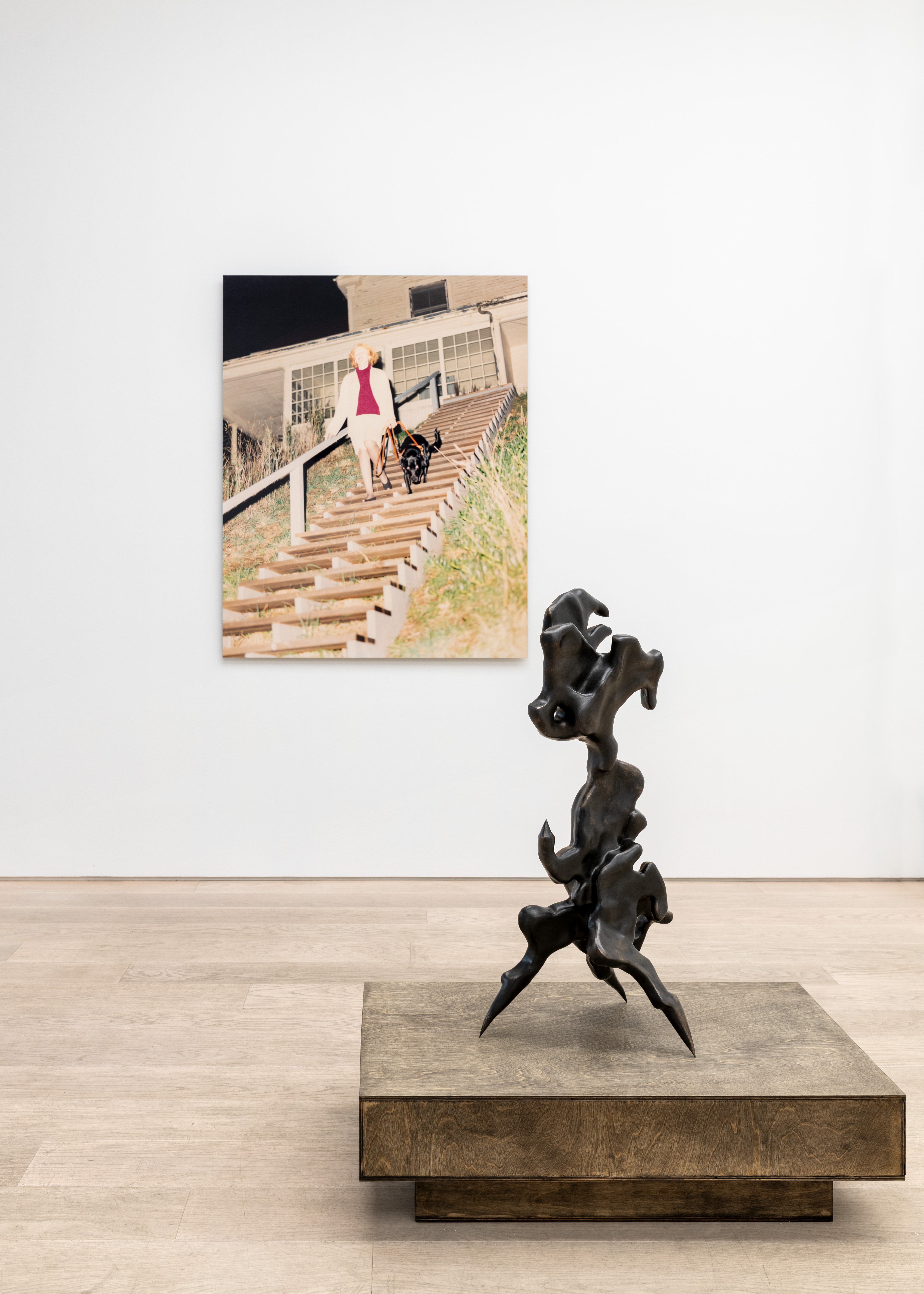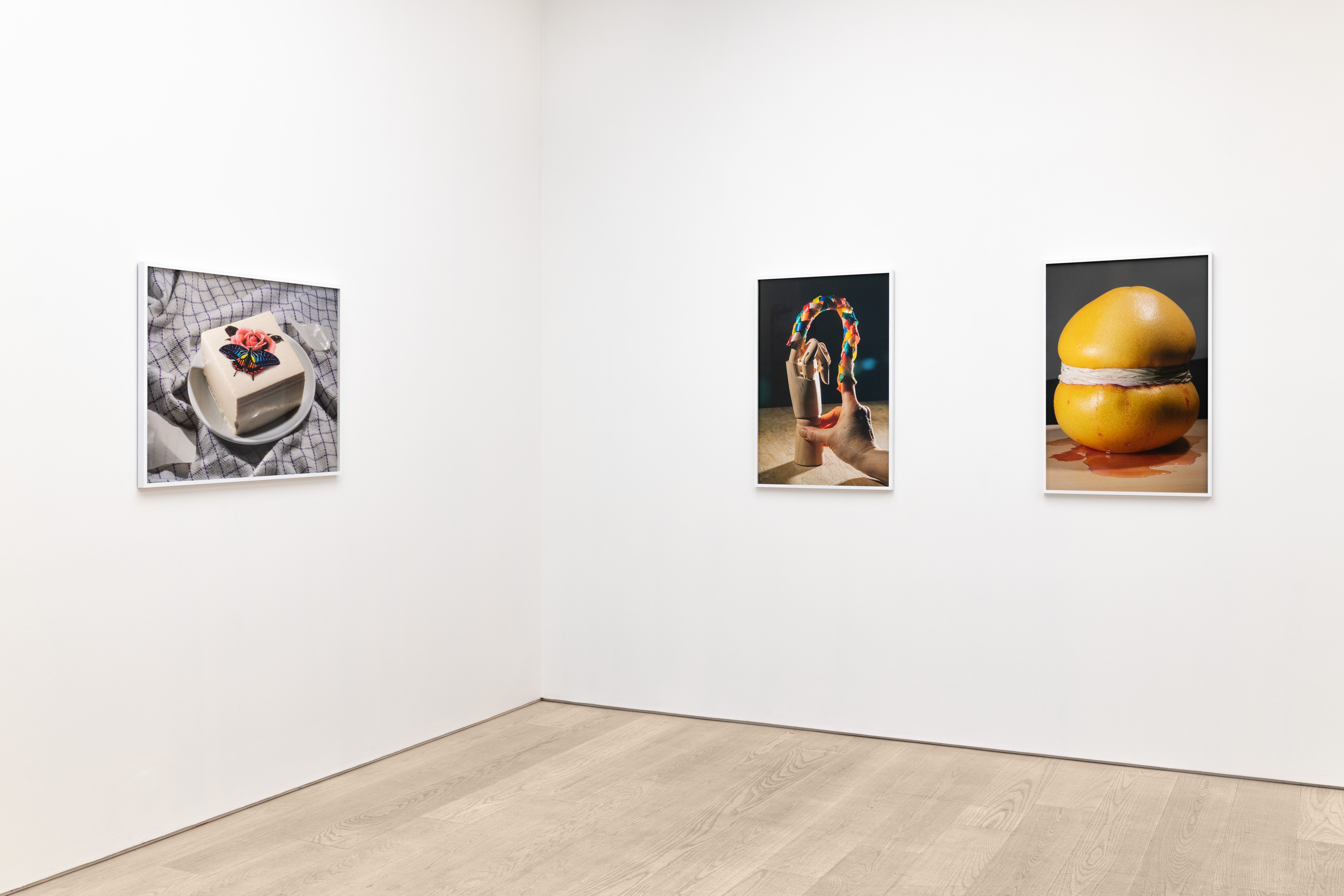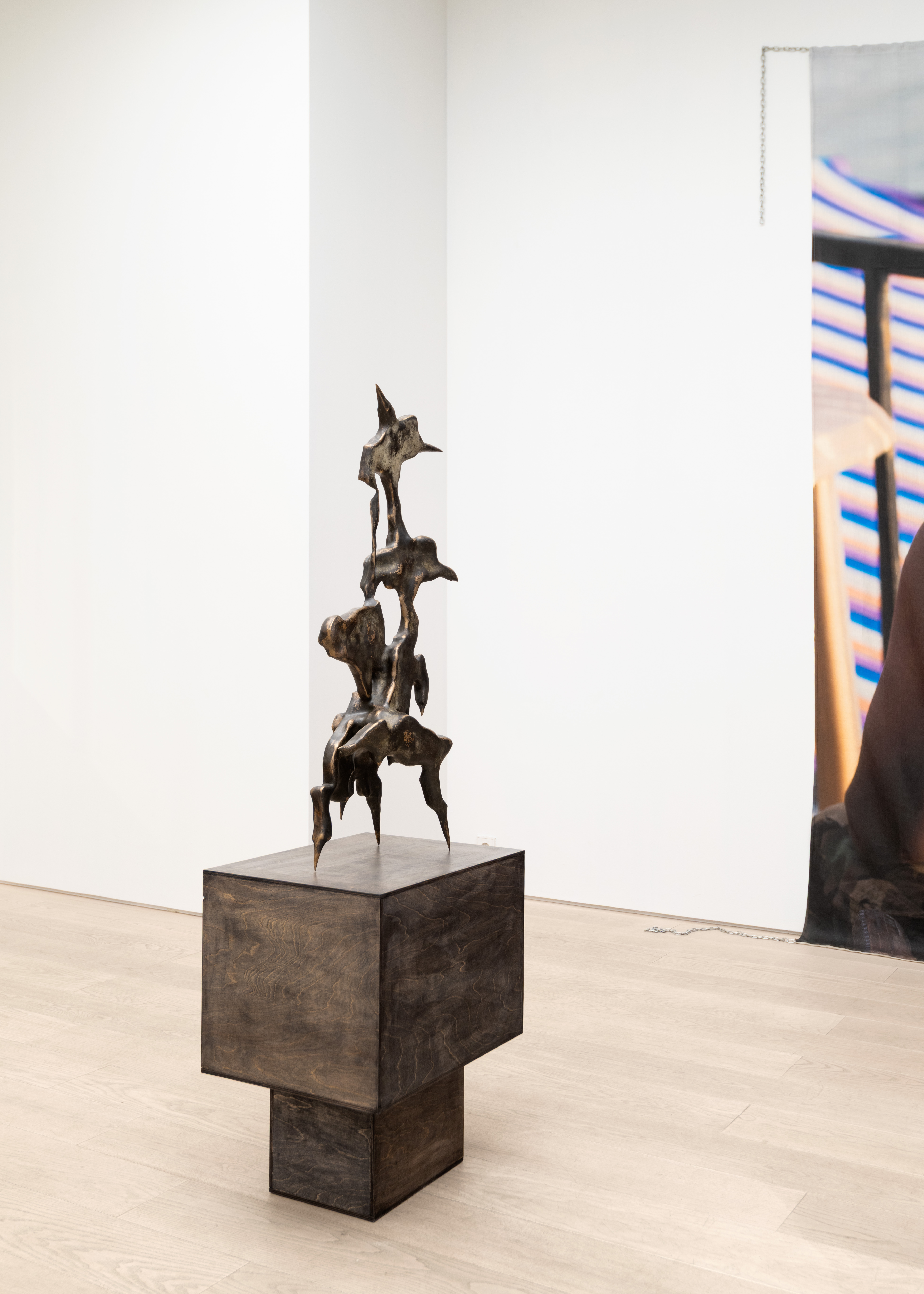With Annika Elisabeth von Hausswolff, Minh Ngọc Nguyễn & Sally von Rosen

Ocean Smile (2025)
Sublimation print on linen, metal chain
254 x 330 cm
A body at rest, yet in motion. Ocean Smile—a 254 x 330 cm linen print—originates from a journey that began far from the shoreline it depicts. The image captures a lone figure sitting at the edge of the vast ocean, a tattoo of The Joker inked across his back, caught between stillness and the expanse before him. The work traces its origins to a 47-hour train ride from Ludhiana in Punjab to Goa in the south, cutting across shifting landscapes, histories of labor, and cycles of migration. The train—a moving threshold—becomes a site where land, possession, and displacement blur into motion, where the relationship between people and place is never the same twice.
As in Encircling Stories (2023), Dhunsi’s practice resists the static nature of photography. The landscapes witnessed from the train—fields of Punjab’s agricultural heartland, industrial zones, arid stretches of central India—reflect the tensions between rootedness and erasure. Agriculture in Punjab remains under threat, its lands continuously reshaped by monoculture and dispossession. Meanwhile, the ocean, upon arrival, presents another kind of uncertainty—an expanse without fixed boundaries, both inviting and unknowable. The figure in Ocean Smile sits at this threshold, back turned, looking towards something that cannot be grasped.
The Joker’s grin, etched into the subject’s skin, introduces an unsettling duality. It is a mask of defiance, perhaps, or of surrender—a reminder that identity itself is layered, performed, and often at odds with its surroundings. Printed onto linen, the image resists the rigid authority of the photographic frame, allowing the material to shift, fold, and breathe. Like the train moving south, like the tide pulling away, like the histories carried in transit, Ocean Smile exists in a space between permanence and dissolution.
Dhunsi’s work continues to explore photography’s role in shaping and controlling vision. To capture a landscape is, in some ways, to claim it, to define its boundaries. But here, vision remains open-ended. Ocean Smile is not an act of possession but of witnessing—of standing at the edge, between land and water, between past and future, between movement and pause.







LINK
